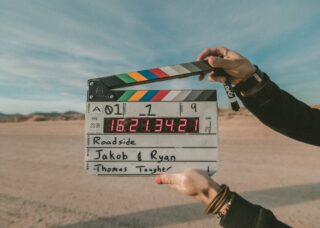 Photo by Abillion on Unsplash
Photo by Abillion on Unsplash WCAG 2.1 – Criterion 1.1.1 – Text Alternatives (Level A)
- Przejdź do artykułów z tagiem accessibility
- Przejdź do artykułów z tagiem digital accessibility
- Przejdź do artykułów z tagiem inclusive design
- Przejdź do artykułów z tagiem WCAGacademy
Article content
New year – new step! We’re starting a weekly Friday series “Understanding Digital Accessibility Based on WCAG 2.1”.
WCAG is a set of technical recommendations that influence the accessibility of digital products.
Today we’re starting with the first success criterion – 1.1.1 Text Alternatives (Level A). What’s this about? Let me give you a quick rundown:
Non-text elements such as icons and graphics should have text alternatives provided. But should all these elements have descriptions? NO! This is the most common mistake made by the development team – they, together with designers, should decide whether a particular icon or graphic contributes to the content layout or not. This is an extremely important stage of design. How can we indicate this?
- alt=”” – an attribute used in the <img> tag indicating a decorative element that will be skipped by assistive technology.
- alt=”small, black dog wearing glasses in a sweater” – an example of how we can describe an element that will be processed by, for example, a screen reader.
Tips for alternative texts:
- do not use the words “photo,” “graphic” – a correctly implemented element will receive this information from the tag or role, for example <img>;
the description should be meaningful, are there any limits…? No, but remember the principle of “less is more”. - Fun fact:
social media, MS Office automatically generate alternative descriptions if we don’t define them manually. They’re not perfect, so it’s better to check them before publishing.
WCAG reference: link to WCAG
A11y annotation kit: link to A11y annotation kit
Automatic generator: link to Automatic generator

Piotr Zrolka
Accessibility expert & CEO
Recommended articles
-
 16.11.2023Not only design
16.11.2023Not only designBook Review: “Neurotribes: The Legacy of Autism and the Future of Neurodiversity”
Today, we celebrate International Tolerance Day. Along with the establishment of this day, the Declaration of Principles of Tolerance was…
-
 22.01.2023Accessibility
22.01.2023AccessibilityWCAG 2.1 – Criterion 1.2.2 – Extended Captions (Level A)
How to address criterion 1.2.2 in the context of time-variable media: If a video has audio, you must add captions!…
-
 28.06.2022Accessibility
28.06.2022AccessibilityAlternative Text for Images
Imagine this situation: all your web browsers suddenly stop working and do not display any images. On the websites, only…
